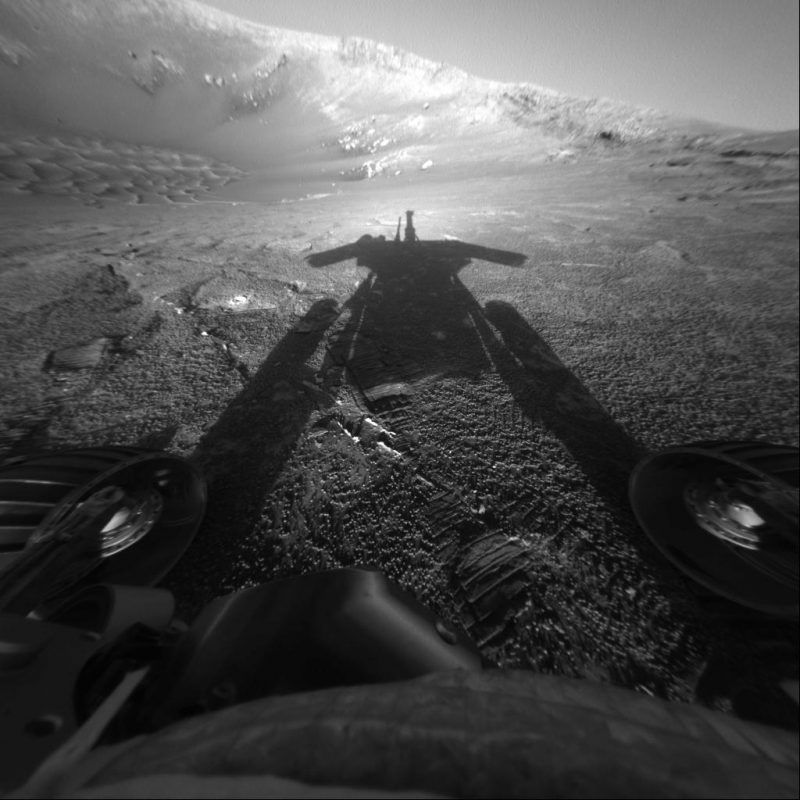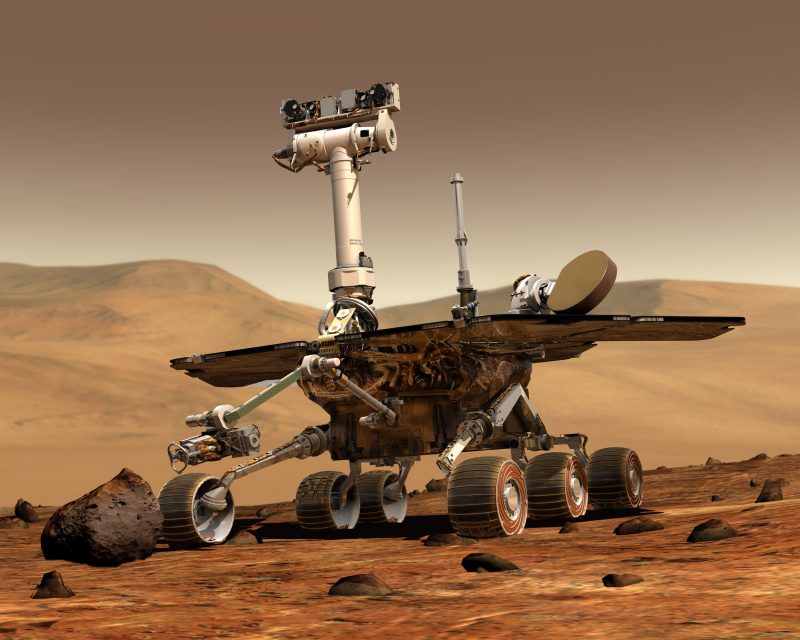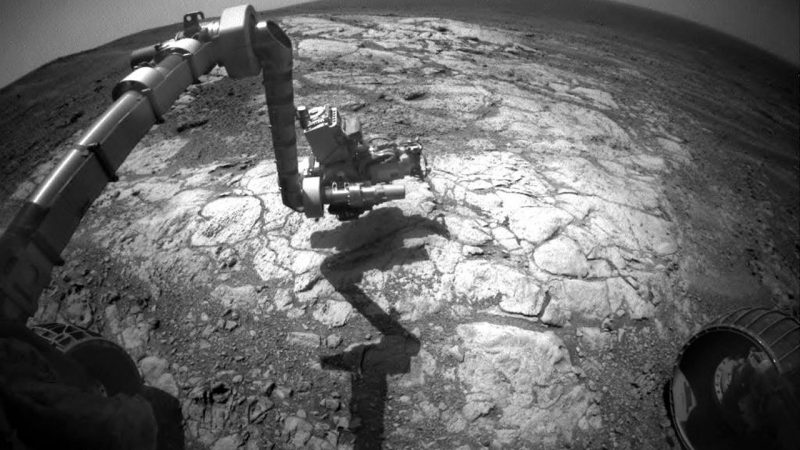
NASA’s beloved Mars rover Opportunity – nicknamed Oppy – launched on July 7, 2003, and ended up surpassing all expectations. It was designed to last 90 Martian days and travel 1,000 meters. But it lasted 15 years and traveled more than 28 miles (45 km) before finally succumbing to a dust storm.
July 7, 2003: Opportunity heads to Mars
Opportunity blasted off on its journey to Mars on July 7, 2003. After traveling for some seven months through space, Opportunity landed in Mars’ Meridiani Planum on January 25, 2004. This was three weeks after its twin rover Spirit touched down on the other side of the planet. Spirit stopped moving across Mars’ surface in 2009, and it stopped sending back signals to Earth in 2010.
But Opportunity – designed to last for 90 Martian days and travel 1,100 yards (1,000 meters) – vastly surpassed all expectations in its endurance, scientific value and longevity. The rover’s mission effectively ended in 2018 (officially in 2019) after some 15 years exploring the surface of Mars.
Incredibly, in addition to exceeding its life expectancy by 60 times, the rover traveled more than 28 miles (45 km) by the time it reached its most appropriate final resting spot in Mars’ Perseverance Valley. The Opportunity rover stopped communicating with Earth when a severe Mars-wide dust storm blanketed its location in June 2018. Presumably, the storm affected the rover’s solar panels. Opportunity’s final communication was, ultimately, received on June 10, 2018.

The long goodbye
NASA, however, didn’t know that yet. Throughout the late summer and fall of 2018, engineers in the Space Flight Operations Facility at NASA’s Jet Propulsion Laboratory (JPL) conducted a multifaceted, eight-month recovery strategy to try to get the rover to communicate. They sent more than 1,000 commands to the rover … but there was no response. In what became a months-long outpouring of emotion, space fans on Twitter and other social media platforms began using the hashtags #ThankYouOppy and #GoodnightOppy.
Space engineers made their last attempt to revive Opportunity on February 12, 2019. They started with a “wake-up song” played in the control room at JPL. The mission’s principal investigator, Steve Squyres, had chosen I’ll Be Seeing You, as performed by Billie Holiday. At 8:10 p.m., Holiday’s wistful voice floated up from the command floor:
I’ll be seeing you in all the old familiar places that this heart of mine embraces.
As was expected by that time, those final efforts at communication were to no avail. Opportunity remained silent on the surface of Mars. Project manager John Callas told the crowd of NASA employees gathered for the farewell transmission:
This is a hard day. Even though it’s a machine and we’re saying goodbye, it’s still very hard and very poignant, but we had to do that. We came to that point.

Opportunity, the little rover that could
From the day Opportunity landed, a team of mission engineers, rover drivers and scientists on Earth collaborated to get the rover from one geologic site on Mars to the next. They plotted workable avenues over rugged terrain so the 384-pound (174-kilogram) Martian explorer could maneuver around and over rocks and boulders and climb gravel-strewn slopes as steep as 32 degrees (an off-Earth record). It could also probe crater floors, summit hills and traverse possible dry riverbeds. Its final venture brought it to the western limb of Perseverance Valley. Overall, Opportunity’s achievements include:
– Setting a one-day Mars driving record on March 20, 2005, when it traveled 721 feet (220 meters).
– Returning more than 217,000 images, including 15 360-degree color panoramas.
– Exposing the surfaces of 52 rocks to reveal fresh mineral surfaces for analysis.
– Clearing 72 additional targets with a brush to prepare them for inspection with spectrometers and a microscopic imager.
– Finding hematite, a mineral that forms in water, at its landing site.
– Discovering strong indications at Endeavour Crater of the action of ancient water similar to the drinkable water of a pond or lake on Earth.
In the video below, Steve Squyres speaks about Opportunity’s mission and its significance.
Overcoming challenges
All those accomplishments were not without the occasional extraterrestrial impediment. In 2005 alone, Opportunity lost steering to one of its front wheels and a stuck heater threatened to severely limit the rover’s available power. A Martian sand ripple also almost trapped it for good. Two years later, a two-month dust storm imperiled the rover. In 2015, Opportunity lost use of its 256-megabyte flash memory. In 2017, it lost steering to its other front wheel.
Each time the rover faced an obstacle, Opportunity’s team on Earth figured out a solution that enabled the rover to bounce back. However, the massive dust storm that took shape in the summer of 2018 proved too much for history’s most senior Mars explorer.

Farewell #Oppy and we thank you.#ThanksOppy https://t.co/ZhS2IOzWJH
— Stream Lightyear on Disney+ so we can get a sequel (@BrandonWNichols) February 14, 2019
Bottom line: NASA’s Opportunity rover launched to Mars on July 7, 2003. It officially ended its mission on February 13, 2019.











